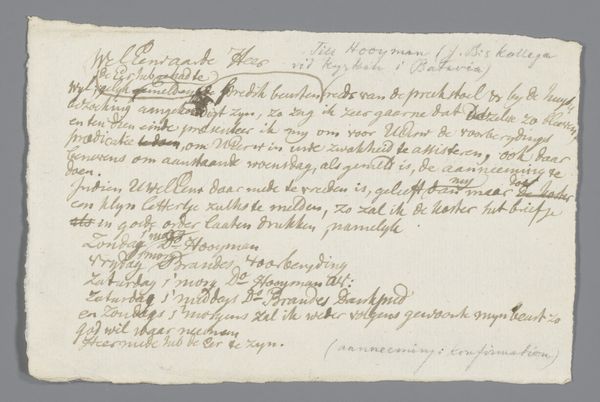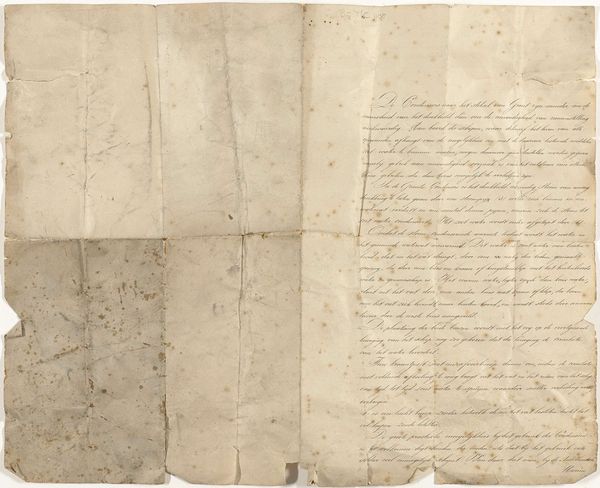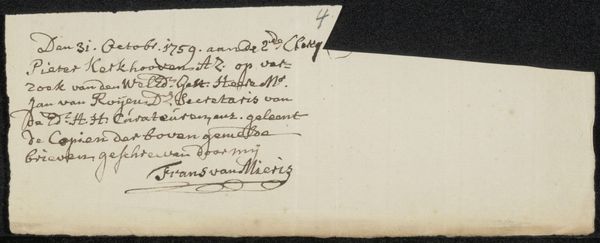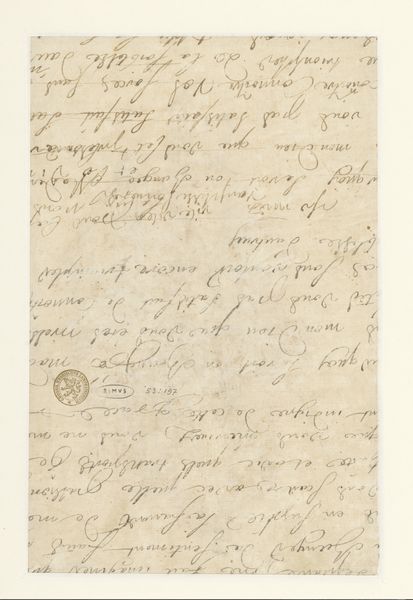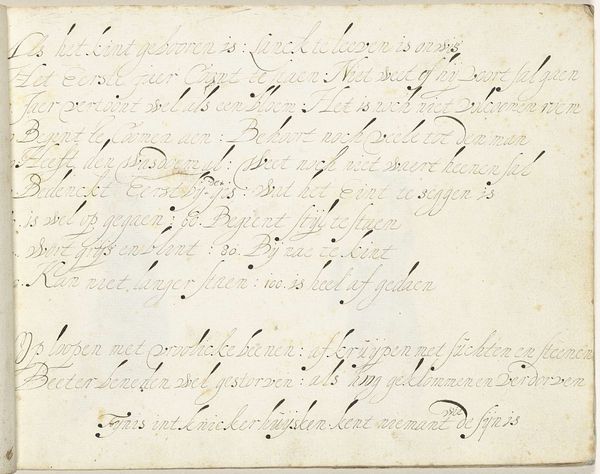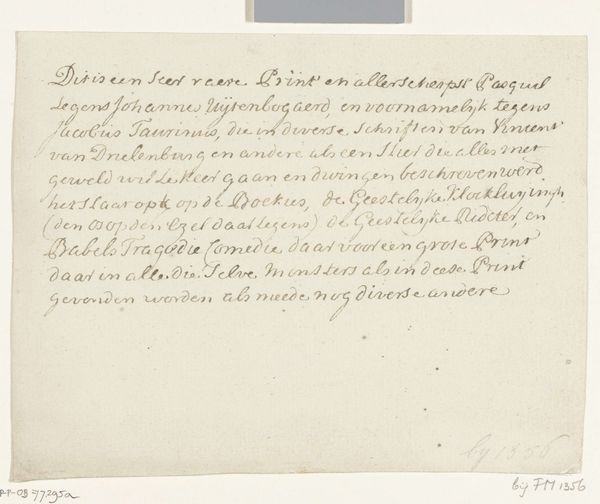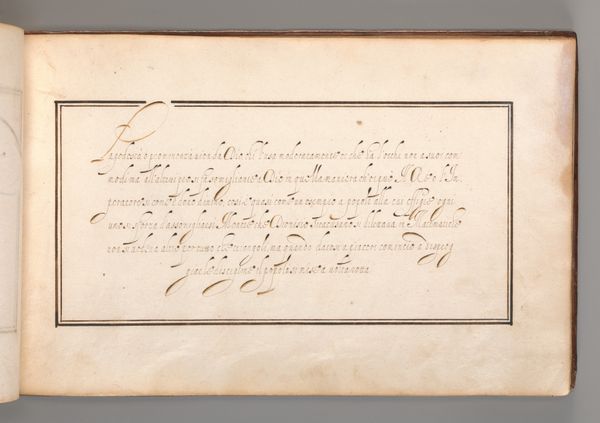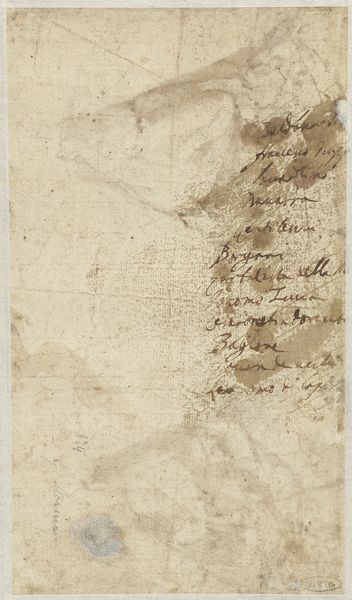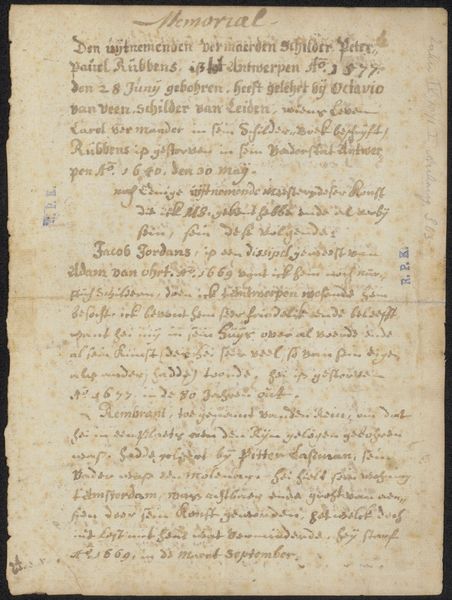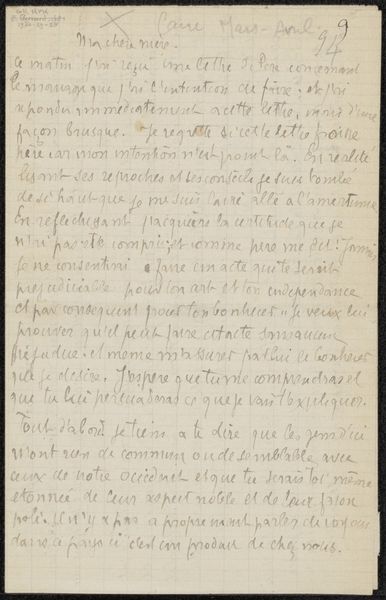
Dimensions: height mm, width mm
Copyright: Rijks Museum: Open Domain
Curator: This piece, entitled "Gebed," which translates to "Prayer," dates back to sometime between 1779 and 1785. It’s an ink drawing, using pen on paper, crafted by the artist Jan Brandes. What are your immediate thoughts looking at this? Editor: It feels incredibly intimate, almost like I've stumbled upon a deeply personal document. The script has a lovely, fluid quality to it. You can see smudges and stains on the paper itself. It evokes the kind of devotional, heartfelt moments people carve out in solitude. Curator: Exactly. The imperfections give it a real sense of humanity. Brandes was working during a time when Romanticism was flourishing. How does that artistic current manifest in this intimate artwork? Editor: Well, Romanticism really emphasizes emotion, intuition, and the individual's relationship with the divine, wouldn't you say? "Gebed," even in its small size, encapsulates this yearning. You see the individual reaching towards something bigger, something spiritual. It's not about grand religious pronouncements; it's about one person's connection with the Almighty. Curator: Right, and there's a vulnerability present too. It is just ink on paper. The handwriting itself adds a dimension. As devotional pieces go, "Gebed" provides quiet accessibility, very distant from the formalization one might associate with official prayer during that era. Do you notice particular symbols emerging? Editor: Yes. While not overtly symbolic, the choice of the written word is meaningful. Text becomes a medium for connecting to the Divine, not just a carrier of prescribed ritual. Each stroke, each word placed so carefully, transforms this simple prayer into something akin to a sacred object. Even in its decay and fading it is lovely, indeed. Curator: The theme of "Genre painting" plays here too, since this work provides the viewer a rare glimpse of religious exercise. The artist isn’t just showing prayer. Instead, he captures an instance of intense religious feeling, presented with deep care. The materiality of the medium connects tangibly to the cultural values present during that time. Editor: Seeing the world this way certainly gives me new appreciation for the layers involved here. I’d always focused on Brandes' illustrations, and seeing a work like this brings me even closer to that historical era. Curator: Agreed, it adds a very moving and profoundly personal facet to the artist's repertoire, and highlights aspects of society that sometimes fade from view.
Comments
No comments
Be the first to comment and join the conversation on the ultimate creative platform.

